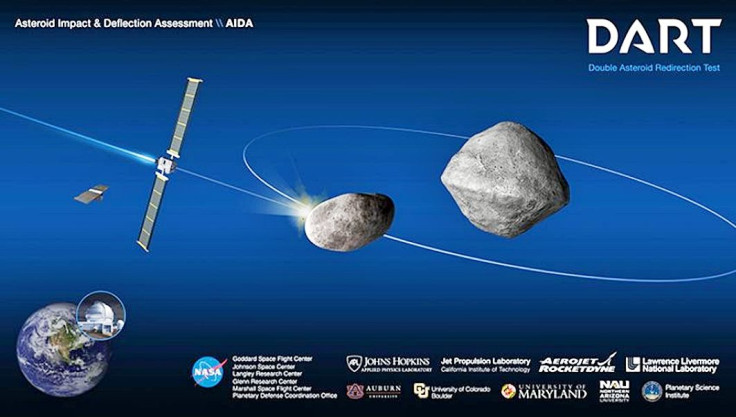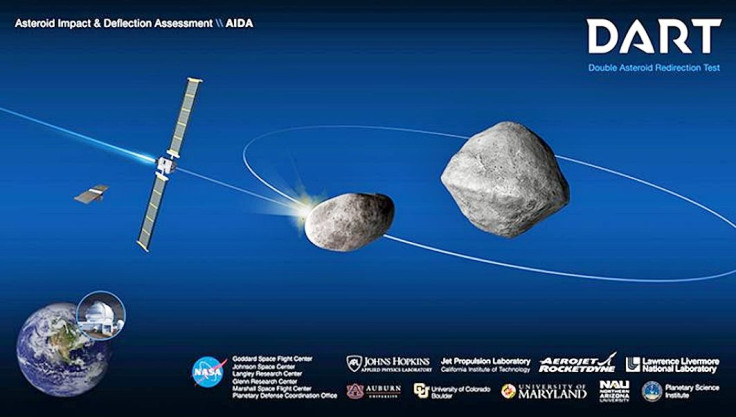SpaceX Wins NASA's DART Mission, To Launch Planetary Defense Test Satellite

A SpaceX Falcon 9 rocket will get to launch humankind’s first planetary defense satellite, which will demonstrate the real world feasibility of using a kinetic impact spacecraft to deflect a small asteroid.
This mission will see a Falcon 9 hurl the Double Asteroid Redirection Test or DART spacecraft towards the small asteroid named 65803 Didymos in June 2021. Didymos is a binary asteroid system in which one asteroid is orbited by a smaller one.
The primary asteroid, or Didymos, is some 800 meters in diameter. Its small satellite or moonlet is about 150 meters in diameter in an orbit 1.1 km from Didymos. DART will target the moonlet.
DART will be programmed to collide with the moonlet at the speed of 6 kilometers per second. The goal of this impact will be to change the speed of the moonlet in its orbit around Didymos by a fraction of 1 percent, enough for the telescopes on Earth to record the event.
DART will demonstrate the kinetic effects of crashing an impactor spacecraft into an asteroid for planetary defense. The mission will test if a spacecraft impact can successfully deflect an asteroid on a collision course with Earth.
A demonstration of an asteroid deflection is a key test NASA and other agencies need to make before the actual need for planetary protection is present.
Total cost for the DART mission to launch, including mission-related costs and other related services, amounts to some $69 million.
"SpaceX is proud to continue our successful partnership with NASA in support of this important interplanetary mission," said SpaceX President Gwynne Shotwell. "This award underscores NASA's confidence in Falcon 9's capability to perform critical science missions while providing the best launch value in the industry."

The Johns Hopkins University Applied Physics Laboratory will supervise the DART mission with support from NASA units such as the Jet Propulsion Laboratory, Goddard Space Flight Center, and Johnson Space Center.
DART will lift-off from Space Launch Complex 4E at Vandenberg Air Force Base in California.
DART is related to a larger effort known as AIDA, or the Asteroid Impact and Deflection Assessment. AIDA acknowledges planetary defense is an international effort, and that scientists and engineers around the world have to work together to solve problems related to planetary defense.
© Copyright IBTimes 2025. All rights reserved.





















